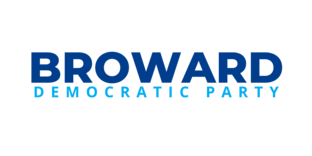National Convention and Delegate Election Information
2016 Democratic National Convention
The 2016 Democratic National Convention will be held the week of July 25th – 28th in Philadelphia, PA.
The process to select Florida’s delegates to the Democratic National Convention in Philadelphia, PA will work as follows:
1. The results of Florida’s March 15, 2016 presidential primary election will be used to apportion delegates to the national convention.
2. On May 7, 2016, grassroots Democrats from each of Florida’s 27 congressional districts will meet in congressional district caucuses to elect 135 district-level delegates to the Democratic National Convention.
3. Following the congressional district caucuses, the Florida Democratic Party will hold a special meeting in Orlando, Florida, May 21, 2016, where the district-level delegates will meet to select 27 Pledged Party Leader and Elected Official (PLEO) Delegates, 45 At-Large Delegates, and 17 At-Large Alternates to the Democratic National Convention.
By ensuring all Democrats have a voice in the national convention, this Delegate Selection and Affirmative Action Plan will ensure that the Florida Democratic Party delegation will truly represent the tremendous diversity of Florida and the Democratic Party.
List of Official Candidates
Per the rules of Florida’s 2016 Delegate Selection Plan, the Presidential campaigns were permitted a right of review period concluding on April 20, 2016. Below, please find the list of official Candidates for District Level Delegates as certified by their respective Presidential Campaigns.
Click here to access the List of official Candidates for district level delegates, pledged to the Clinton Campaign.
Click here to access the List of official Candidates for district level delegates, pledged to the Sanders Campaign.
Information on Florida’s 2016 Congressional District Caucuses
The Florida Democratic Party will host Congressional District Caucuses to elect District Level Delegates to the 2016 Democratic National Convention.
Congressional District caucuses will take place across the state between 10AM and 2PM on Saturday, May 7, 2016, with early voting in select Congressional Districts to be held on Thursday, May 5,2016.
If you wish to file as a candidate for PLEO, At-Large, or Alternate Delegate, please follow the instructions below:
Click here to download the 2016 PLEO, At-Large and Alternate Delegate Filing Form.
Please complete the form and mail to:
Florida Democratic Party
ATTN: PLEO, At-Large, Alternate
214 S. Bronough Street
Tallahassee, FL 32301
Please Note: PLEO, At-Large, and Alternate candidates must fully complete the statement of candidacy, pledge of support and loyalty oath and file it with the Florida Democratic Party between February 17, 2016, and May 9, 2016, by 12:00 pm. Incomplete submissions will result in your form not being accepted. Please call 850-222-3411 for questions regarding your filing status.
Delegate Allocation
Florida’s Delegates to the Democratic National Convention are a allocated to each Presidential Campaign based on vote of the March 15, 2016 Presidential Preference Primary.
Please click here to view the Allocation of Delegates to the 2016 Democratic National Convention.
Additional Information and Documents
Click here to view the 2016 “How To Become a DNC Delegate” Presentation.
Click here to view the 2016 “How to Run for District Level Delegate” Handout.
Click here to view the 2016 “Delegate Selection Plan.”
